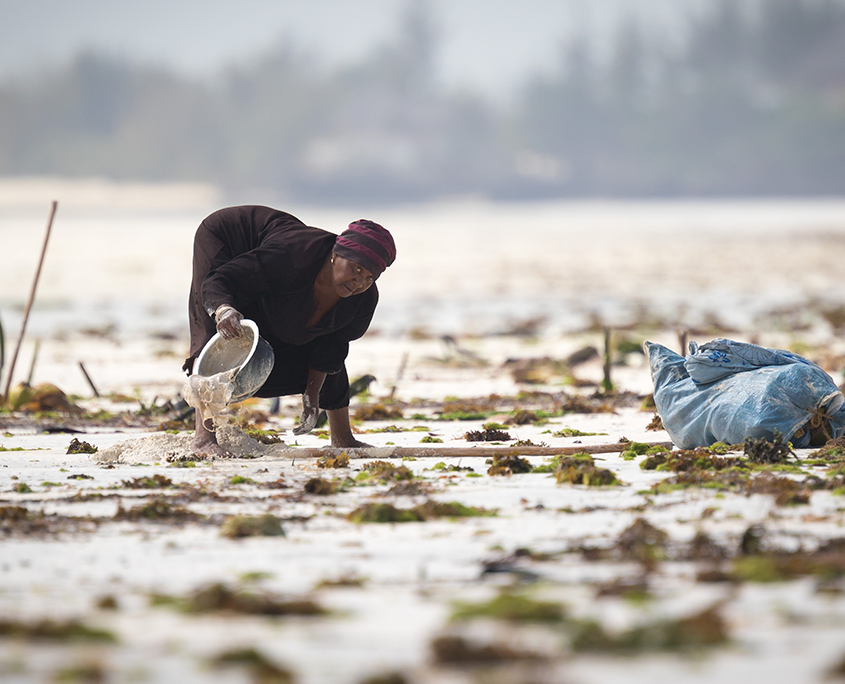A local womon in Zanzibar, Tanzania harvesting sea weed from the Indian Ocean
Photo Credit: Sander Meertins/iStock/Getty Images
Earth is speaking
The current global climate crisis is no longer a secret; we all feel its effects, from rising temperatures to changing weather patterns. Unfortunately, it is getting worse faster than we imagined, and we must act before it is too late.
According to a recent report by BBC, by 2025, half of the world’s population will be living in water-stressed areas due to climate change and poor management of resources. The rise in drought has resulted in some of the worst cases of hunger and related fatalities we have seen to date.
Graaff-Reinet, a town in South Africa, has not seen any rain in the last five years. Despite being the 30th driest country globally, South Africa’s Nqweba Dam in Graaff-Reinet has left 37,670 residents stranded after it dried up. As a result, locals rely on boreholes for water, but these only yields enough water for 80% of the town’s nearly 40,000 residents. One man fills beer bottles with water at a single tanker near the Municipality’s Depot. Unfortunately, it is no longer a laughing matter, and the situation is dire.
In Indonesia, a village survives a drought on cave water that runs 10 meters deep. The government water trucks deliver only once or twice a month, leading the community to trust the cleanliness of the cave water. However, with the rising water demand, people in Java risk having just a quarter of their annual freshwater requirement by 2040. A solution presented is to build 12 dams to provide 10 million more homes with running water.
Australia’s Darling River has experienced a severe drought, evacuating 800 fish to downstream waters. In 2018, one million fish died due to record heat, storms, and inadequate water management. In addition, scientists have indicated that climate change amplified the crisis.
Like Australia, India’s Puzhal Lake suffered from drought a few months ago, which was visible from space due to the low rainfall in 2018. Furthermore, much of Chennai’s commercial and residential areas built on wetlands affected the city’s water supply. As a result, wells ran dry in less than an hour, and there was no certainty about the amount of water available for the population.
Fortunately, Chennai received excess rainfall, resulting in a 5% increase in rains during October as part of the northeast monsoon. As a result, the four main reservoirs will reach full capacity for the first time since 2015, providing relief to the city’s residents.
In light of these environmental crises, we must plan and adapt quickly to protect the earth, which we depend on for survival.



